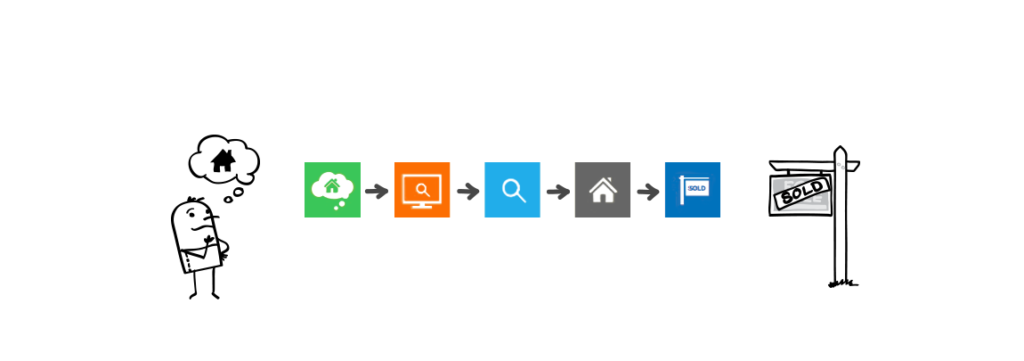I prefer to concentrate on practical information rather than on theory. However, there are certain frameworks which can make things much easier when planning a marketing strategy.
University classes taught students till recently to think of marketing as of a funnel. On top of the funnel you have the vaguely interested people who just see your product browsing around. Then the lower the funnel they go, the most likely they are to convert.
This is a simple way to represent the process of sales and marketing, but there is one problem with it. It is oversimplifying it. Recently we hear more often about the customer journey. This is a much more sophisticated framework describing the behaviour of people when engaging with a brand. The process has more stages than the funnel model and people can move through it in both directions.
The reason why the customer journey gives a truer representation of the marketing process is because customers interact with a brand in multiple touch points. Salesforce.com’s recent study shows that on average it takes 8 touch points with a brand for someone to convert. Let’s see how each stage of the customer journey might look like in the digital world.
- Here a customer might come across one of the billboards of digital marketing – a display campaign on YouTube or a banner on their favourite website. It is likely that they are targeted by historical behaviour (similar products they have seen) or just by demography. For example, a woman in her late twenties is likely to be targeted by pregnancy tests and fertility products purely on her gender and age.
- Once someone has already been on the website of the brand they have shown some interest. They might have downloaded a brochure, requested a free quote, or just browsed a few pages. Then comes remarketing on other channels – for example social media, news websites, YouTube.

- This is the moment when customers are likely to engage in more detailed content marketing. For example, watching videos about a car brand might indicate a desire for purchase. Often at this stage people would use search engine to find the brand name and click on a search engine ad.
- When customers are ready to buy, they would likely search for the brand directly online, try to locate its nearest store on Google maps or search big ecommerce websites to order the product online.
- Post action. This is often underestimated step of the process which did not even exist in the funnel model. This is leaving a review, talking about the brand to friends, sharing on social media etc. The post action has a weight even bigger than the action itself, because it has the power to drive referrals to the business.
In this case, I emphasised more on the online touch points in the customer journey, but remember that they can be offline too. Someone who shares a negative review is likely to also talk to their friends negatively about a product. Entering a brick and mortar store is as important as doing a search on Amazon. Providing a flawless experience on all stages of the journey is what brings marketing success for a brand.

